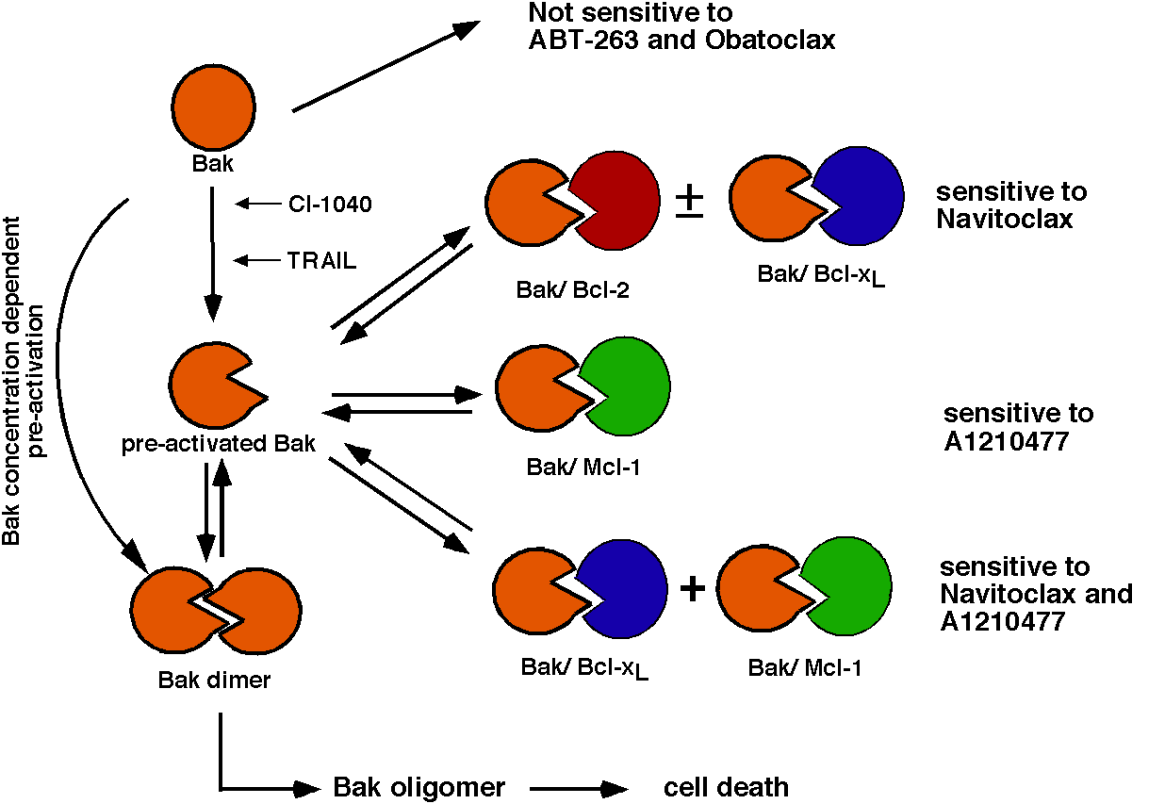Cells die in different ways: apoptosis, necrosis, anoikis and autophagy. Apoptosis is a kind of programmed cell death, thus it plays an essential role in development, immune response, and tissue homeostasis, as well as in cancer development and treatment. Apoptosis can proceed through two different pathways: the extrinsic pathway and the intrinsic pathway. The intrinsic apoptotic pathway, also termed mitochondrial apoptotic pathway, is controlled by members of the Bcl-2 protein family through mitochondrial outer membrane permeabilization (MOMP).
Bak is one of the molecules which belong to the Bcl-2 protein family. Once Bak is activated, it can directly permeabilize the mitochondrial outer membrane, leading to the release of mitochondrial inter-membrane space proteins, including cytochrome c and Smac. Cytosolic cytocrome C and Smac could activate downstream apoptosis signals.
Recently, a study jointly conducted by Prof. DAI Haiming from Center for Medical Physics and Technology, Hefei Institutes of Physical Science, Chinese Academy of Sciences and scientists from Mayo Clinic and Johns Hopkins reported that other than BH3-only proteins-dependent Bak activation, Bak could be activated through a concentration-dependent auto-activation mechanism in the cells. In particular, up to 80% of Bak (but not Bax) in lymphohematopoietic cell lines is oligomerized and bound to anti-apoptotic Bcl-2 family proteins in the absence of exogenous death stimuli. Moreover, the sensitivity of cells to BH3 mimetics reflects the identity of the anti-apoptotic proteins to which Bak is constitutively bound. The study also showed that high Bak expression correlates with sensitivity of clinical acute myelogenous leukemia to chemotherapy, whereas low Bak expression correlates with resistance and relapse. Therefore, the amount and the status of Bak auto-activation could be used as a biomarker to determine drug sensitivity in cancer cells, which gives a promising prospect in prediction anti-cancer drug sensitivity for cancer treatment.
Under the title of Constitutive Bak activation as a determinant of drug sensitivity in malignant lymphohematopoietic cells, the research findings were published in Genes and Development.This study not only sheds new light on Bak activation, but also gives new thoughts of prediction of anti-cancer drugs sensitivities.

Model of concentration-dependent Bak autoactivation (Image by DAI Haiming)
Contact:
DAI Haiming, Professor
Center for Medical Physics and Technology, Hefei Institutes of Physical Science, Chinese Academy of Sciences
Hefei, Anhui 230031, China
Tel: +86 551 65595338
E-mail: daih@cmpt.ac.cn